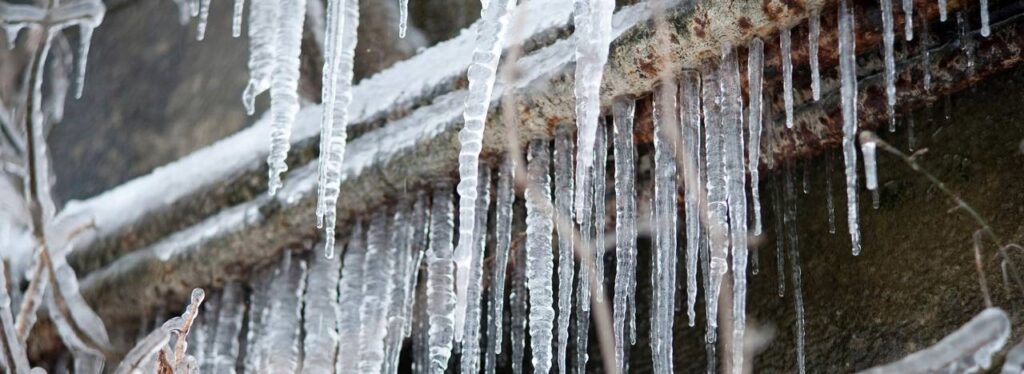Critical Approaches for Avoiding Frozen Plumbing in Winter
Critical Approaches for Avoiding Frozen Plumbing in Winter
Blog Article
What are your insights and beliefs on 6 Ways to Prevent Frozen Pipes?

Winter can wreak havoc on your plumbing, specifically by freezing pipes. Right here's exactly how to avoid it from happening and what to do if it does.
Intro
As temperatures drop, the threat of frozen pipes increases, possibly resulting in expensive repair services and water damages. Comprehending just how to avoid frozen pipelines is crucial for home owners in chilly climates.
Understanding Frozen Pipes
What triggers pipelines to freeze?
Pipes ice up when exposed to temperatures below 32 ° F (0 ° C) for expanded periods. As water inside the pipelines ices up, it increases, taxing the pipe walls and potentially triggering them to rupture.
Risks and damages
Frozen pipelines can lead to water supply disruptions, building damages, and pricey fixings. Burst pipelines can flooding homes and cause considerable structural damages.
Indications of Frozen Pipes
Recognizing frozen pipes early can stop them from breaking.
How to recognize frozen pipes
Seek decreased water circulation from taps, unusual smells or sounds from pipelines, and visible frost on subjected pipelines.
Avoidance Tips
Insulating prone pipes
Cover pipes in insulation sleeves or use heat tape to safeguard them from freezing temperatures. Focus on pipes in unheated or exterior areas of the home.
Heating methods
Keep interior areas effectively warmed, specifically locations with pipes. Open up closet doors to enable warm air to flow around pipelines under sinks.
Shielding Outside Pipes
Yard tubes and exterior faucets
Separate and drain pipes garden tubes prior to wintertime. Mount frost-proof faucets or cover outside taps with shielded caps.
What to Do If Your Pipelines Freeze
Immediate activities to take
If you presume icy pipelines, keep faucets open up to ease pressure as the ice thaws. Make use of a hairdryer or towels soaked in warm water to thaw pipelines slowly.
Long-Term Solutions
Structural changes
Think about rerouting pipes far from exterior walls or unheated locations. Add additional insulation to attic rooms, basements, and crawl spaces.
Updating insulation
Purchase premium insulation for pipelines, attic rooms, and walls. Appropriate insulation helps keep constant temperatures and minimizes the risk of icy pipelines.
Conclusion
Protecting against frozen pipes calls for aggressive steps and fast feedbacks. By understanding the causes, indications, and preventive measures, home owners can secure their pipes throughout winter.
6 Proven Ways to Prevent Frozen Pipes and Protect Your Home
Disconnect and Drain Garden Hoses
Before winter arrives, start by disconnecting your garden hoses and draining any remaining water. Close the shut-off valves that supply outdoor hose bibs and leave the outdoor faucet open to allow any residual water to drain. For extra protection, consider using faucet covers throughout the colder months. It’s also important to drain water from any sprinkler supply lines following the manufacturer’s directions.
Insulate Exposed Pipes
Insulating your pipes is an effective way to prevent freezing. Pipe insulation is readily available at home improvement stores and is relatively inexpensive. Pay close attention to pipes in unheated areas such as the attic, basement, crawl spaces, or garage. Apply foam insulation generously to create a buffer against the cold. You can also wrap your pipes in heat tape or thermostat-controlled heat cables for added warmth.
Seal Air Leaks
Inspect your home for any cracks or openings that could let in cold air. Seal any holes around the piping in interior or exterior walls, as well as the sill plates where your home rests on its foundation. Additionally, make sure to keep your garage door closed unless you’re entering or exiting. Leaving it open creates a significant air leak that can lead to frozen pipes.
Allow Warm Air Circulation
During cold snaps, it’s essential to allow warm air to circulate evenly throughout your home. Leave interior doors ajar to promote better airflow. Open kitchen and bathroom cabinets to help distribute heat consistently around the rooms. If you have small children or pets, be sure to remove any household chemicals or potentially harmful cleaners from open cabinets for safety.
Let Faucets Drip
A small trickle of water can make a big difference in preventing ice formation inside your pipes. When temperatures drop significantly, start a drip of water from all faucets served by exposed pipes. This continuous flow helps prevent the water from freezing. Additionally, running a few faucets slightly can relieve pressure inside the pipes, reducing the chances of a rupture if the water inside does freeze.
https://choateshvac.com/6-proven-ways-to-prevent-frozen-pipes-and-protect-your-home/

I stumbled upon that entry on Winter Plumbing Precautions: Preventing Frozen Pipes while perusing the internet. Loved our content? Please quickly share it. Help others check it out. Bless you for your time. Come back soon.
Click Here Report this page